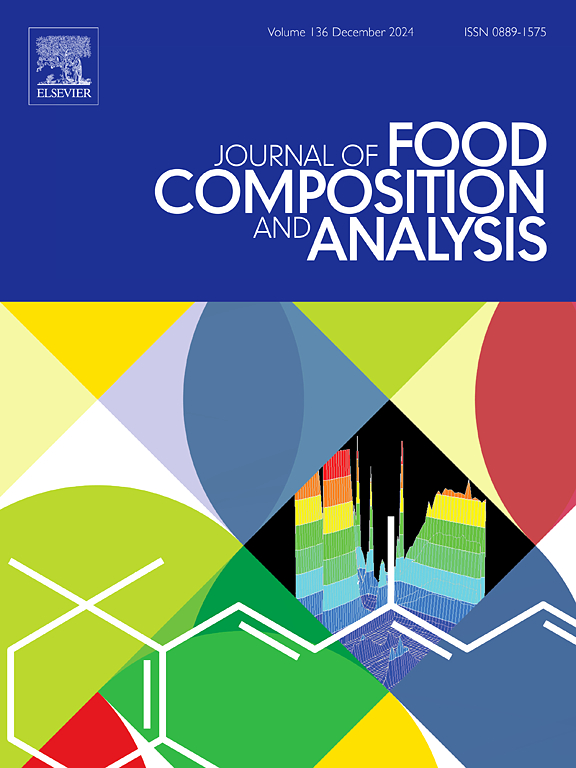Analysis of volatile metabolite dynamics in Jiuqu hongmei tea during processing using HS-SPME-GC-MS and HS-GC-IMS techniques
IF 4
2区 农林科学
Q2 CHEMISTRY, APPLIED
引用次数: 0
Abstract
This study explored the dynamic variations in volatile metabolites during the processing stages of Jiuqu hongmei tea, correlating these changes with the tea's aroma profile. Five processing stages—fresh tea, withered tea, kneaded tea, fermented tea, and finished tea—were examined. Using headspace solid-phase microextraction gas chromatography-mass spectrometry (HS-SPME-GC-MS) in conjunction with sensory evaluation and headspace gas chromatography-ion mobility spectrometry (HS-GC-IMS), we analyzed the samples to elucidate the aroma development and understand the dynamic shifts in volatile compounds. Partial least squares discriminant analysis (PLS-DA) was employed to interpret the results. Our findings identified 190 volatile compounds, including alcohols, aldehydes, esters, ketones, and hydrocarbons, with 21 compounds (rOAV > 1) significantly contributing to the aroma. Post-fermentation, a reduction in most volatile compounds was observed. This study provided valuable insights into the production and quality control of Jiuqu hongmei tea, offering a meaningful reference for its processing and flavor enhancement.
求助全文
约1分钟内获得全文
求助全文
来源期刊

Journal of Food Composition and Analysis
工程技术-食品科技
CiteScore
6.20
自引率
11.60%
发文量
601
审稿时长
53 days
期刊介绍:
The Journal of Food Composition and Analysis publishes manuscripts on scientific aspects of data on the chemical composition of human foods, with particular emphasis on actual data on composition of foods; analytical methods; studies on the manipulation, storage, distribution and use of food composition data; and studies on the statistics, use and distribution of such data and data systems. The Journal''s basis is nutrient composition, with increasing emphasis on bioactive non-nutrient and anti-nutrient components. Papers must provide sufficient description of the food samples, analytical methods, quality control procedures and statistical treatments of the data to permit the end users of the food composition data to evaluate the appropriateness of such data in their projects.
The Journal does not publish papers on: microbiological compounds; sensory quality; aromatics/volatiles in food and wine; essential oils; organoleptic characteristics of food; physical properties; or clinical papers and pharmacology-related papers.
 求助内容:
求助内容: 应助结果提醒方式:
应助结果提醒方式:


